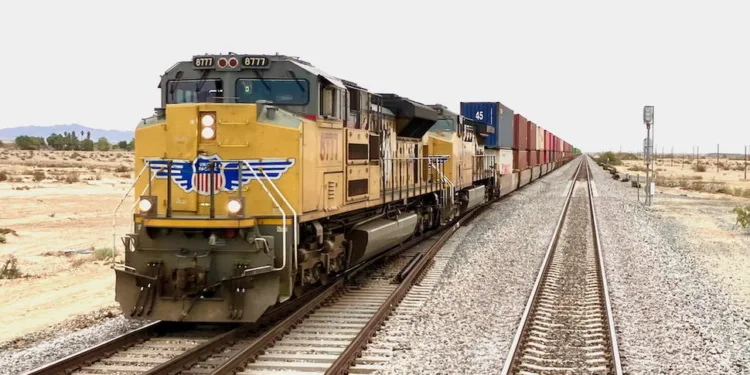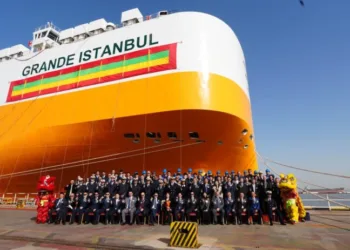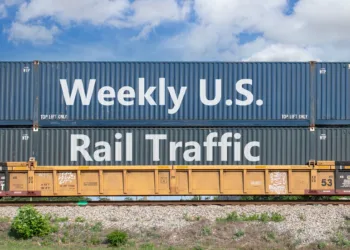The proposed merger between Union Pacific (UP) and Norfolk Southern (NS) would fundamentally reshape the U.S. railroad landscape, creating a single-line transcontinental network poised to redefine freight transportation. If successful, the deal would blend the strengths of both carriers—UP’s western U.S. dominance and NS’s eastern operations—facilitating seamless coast-to-coast service. Such integration holds significant potential for railroad customers, including retailers, manufacturers, and suppliers who rely heavily on rail for the distribution of goods, raw materials, and manufactured products.
For shippers, the combined UP-NS network offers both opportunities and challenges. The most immediate advantage would be enhanced operational efficiency. By eliminating interchanges at major hubs like Chicago, Memphis, and New Orleans—a common bottleneck in the current system—shippers can expect reduced transit times and potentially lower costs. A streamlined process improves reliability and agility in the supply chain, which is particularly beneficial for time-sensitive industries such as retail and manufacturing. Norfolk Southern customers would get direct access to Mexico; Union Pacific customers could ship straight from southern California through to New York City.
However, concerns always exist regarding reduced competition. A merger of this magnitude could reduce the number of Class I railroads from six to five, potentially driving up rates due to decreased competition, as highlighted by industry critics. Because Union Pacific and Norfolk Southern serve two different, non-overlapping regions of the United States, it’s hard to see how the industry would lose significant competitiveness. Past mergers have shown mixed results; while some efficiencies were gained, others led to service disruptions and price hikes due to reduced market competition.
The merged entity would oversee one of the densest rail networks in North America, with particular increases in traffic expected along high-volume transcontinental routes. Key lanes would likely include intermodal-heavy corridors connecting West Coast ports like Los Angeles to Eastern destinations via hubs such as Chicago and New York. These lanes are crucial, not just for general freight and merchandise, but also for specialized commodities like chemicals and bulk goods, including grain and coal.
The densest lanes are projected to emerge post-merger, similar to historical precedents where traffic density increased with reduced route overlaps. This will likely lead to intensified usage of corridors such as the Overland Route and the Crescent Corridor, capitalizing on directional running and route optimization for heightened efficiency.
The merger of Union Pacific (UP) and Norfolk Southern (NS) would predominantly lean towards intermodal traffic, accounting for approximately 53% of the combined network’s total volume. This strong emphasis on intermodal reflects the strategic advantage of tapping into the efficient transcontinental routes, facilitating the flow of containers from key West Coast ports to Eastern markets. UP’s substantial container traffic, combined with NS’s intermodal leverage, emphasizes this projection. Bulk commodities, such as coal and grain, would comprise about 15.6% of the volume, with UP deriving notable coal volumes from its access to the Powder River Basin. Merchandise freight, which includes chemicals, motor vehicles, petroleum products, and other goods, would constitute the remaining 31.6%. NS moves significant volume in petroleum products and automotive parts, including finished vehicles, contributing to this segment.
Growth within this combined entity would largely be driven by enhanced intermodal capabilities. The ability to provide consistent, reliable service across a single integrated network is expected to attract shippers seeking to streamline operations and cut costs. Additionally, potential increases in chemical and merchandise shipments could be facilitated by seamless transitions across strategic points, particularly in high-density lanes connecting major economic hubs.
Despite the promising synergies, the merger will undergo significant scrutiny. Regulatory bodies like the Surface Transportation Board (STB) will assess the merger’s implications on competition, particularly in regions where the two companies previously competed. Past industry consolidations suggest that any approval process will be lengthy and contentious, with stakeholders from various sectors voicing concerns over potential rate increases and decreased service options.
A merger between Union Pacific and Norfolk Southern has the potential to transform the U.S. freight landscape by creating the first coast-to-coast single-line railroad. While it should generate efficiencies and increased network density, especially along key transcontinental routes, it also raises questions about competitive dynamics and regulatory hurdles. Shippers stand to benefit from faster, more reliable service—though these advantages must be weighed against the risks of reduced competition and potential integration challenges.
The post Analysis: What a Union Pacific – Norfolk Southern merger would look like appeared first on FreightWaves.




















